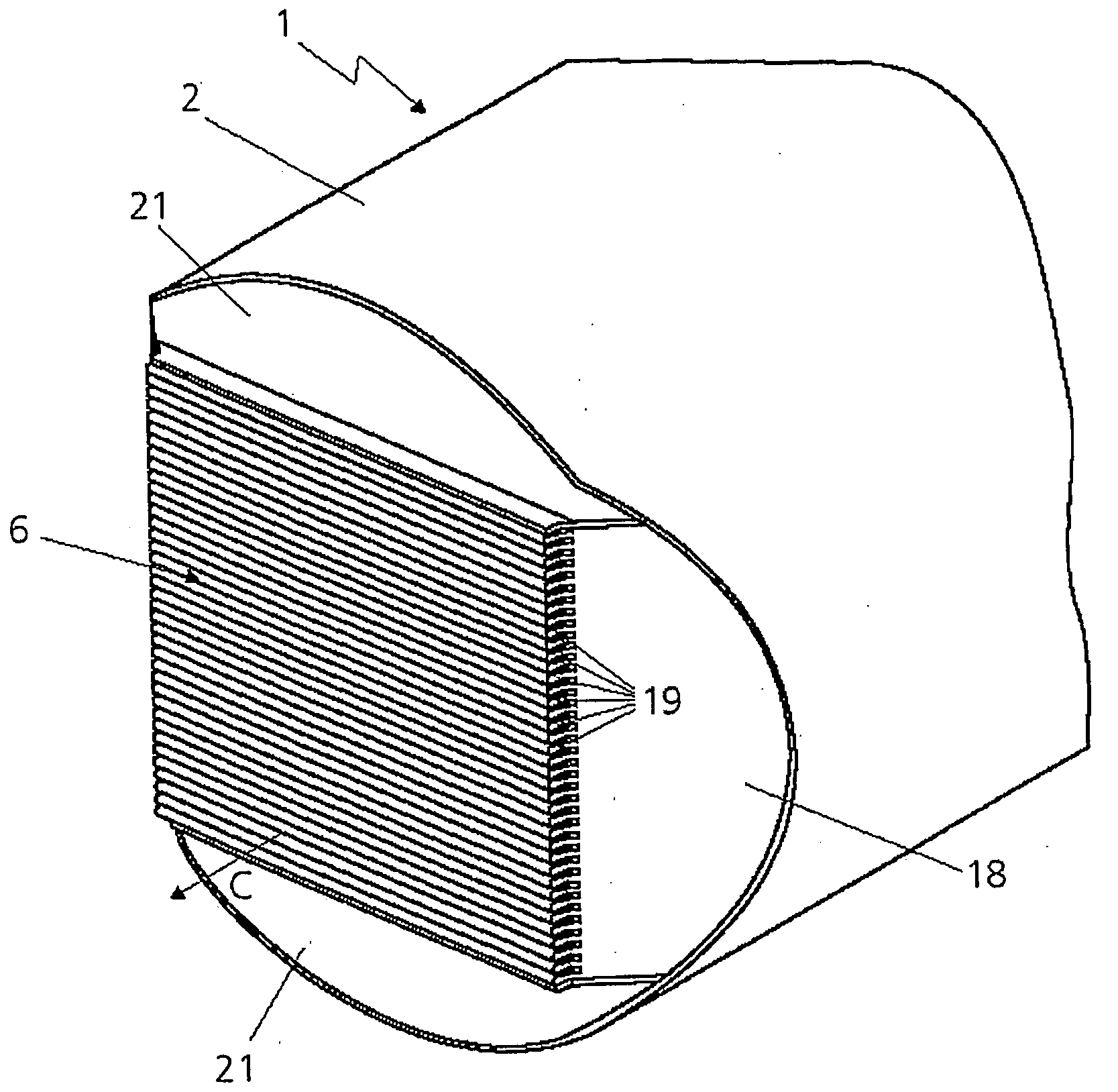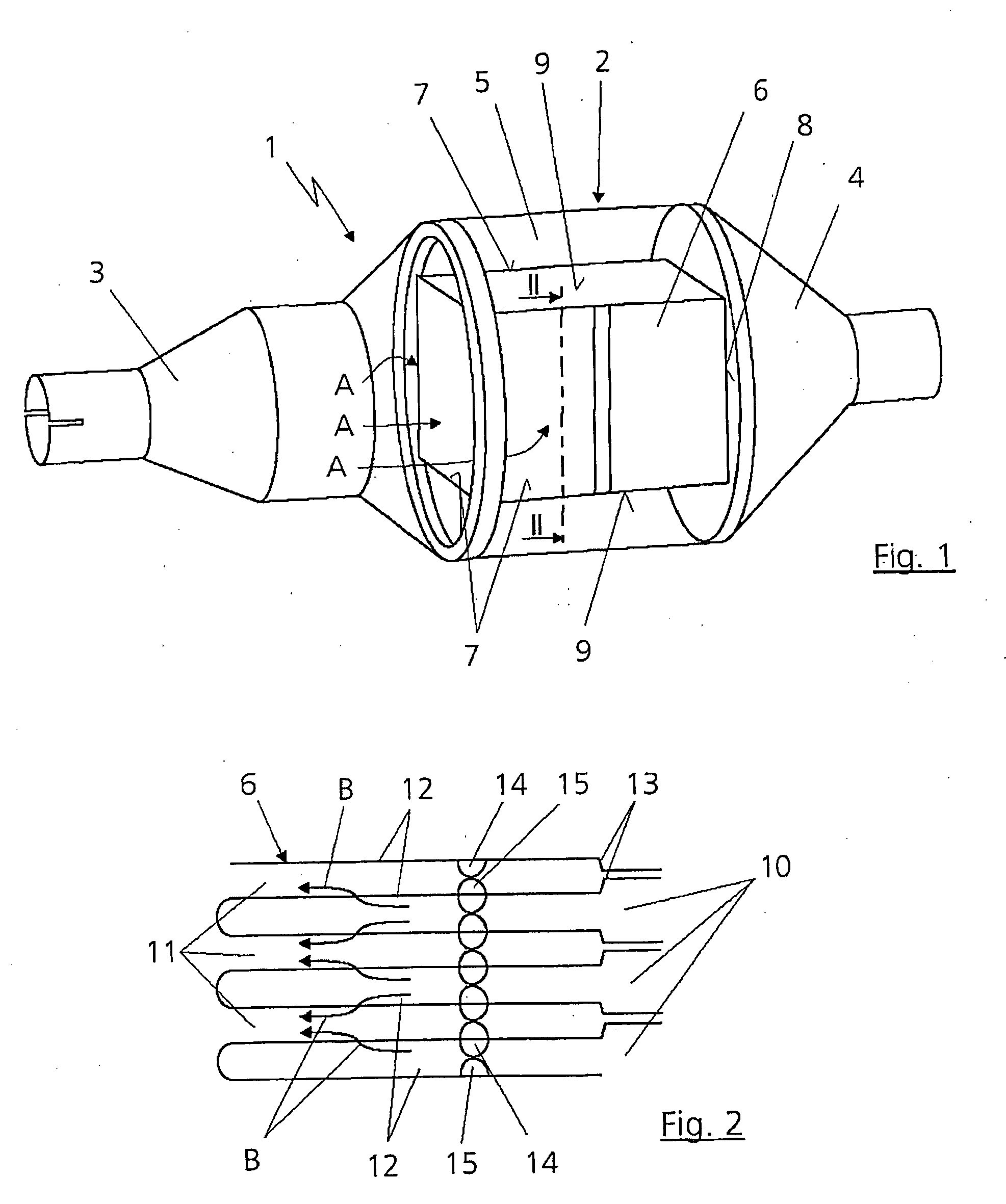Particulate filter
a technology of particle filter and filter body, which is applied in the direction of dispersed particle separation, separation process, chemistry apparatus and processes, etc., can solve the problems of high exhaust gas back pressure, adversely affecting the performance of the filter, and connection of individual filter pockets, so as to achieve reliable sealing of the filter body, easy to adapt, and reduce structural expenditure
- Summary
- Abstract
- Description
- Claims
- Application Information
AI Technical Summary
Benefits of technology
Problems solved by technology
Method used
Image
Examples
Embodiment Construction
[0033]FIG. 1 shows a particulate filter 1 for separating particulates out of an exhaust gas flow of an internal combustion engine (not illustrated), which particulate filter 1 has a housing 2. In the illustrated embodiment, the housing 2 is circular in cross section over its entire length and has an inflow pipe 3 and an outflow pipe 4 which can be integrated into an exhaust line (not illustrated) of the internal combustion engine. A filter body 6 is arranged in a central section 5, situated between the inflow pipe 3 and the outflow pipe 4, of the housing 2, which filter body 6 has an inflow region 7 and an outflow region 8. The filter body 6 is of substantially quadrangular design and has respective closure plates 9 at its upper side and its lower side. The outflow region 8 is situated at that side of the filter body 6 which faces toward the outflow pipe 4, while the three remaining sides of the filter body 6 form the inflow region 7. As is illustrated by the arrows denoted by “A”, ...
PUM
| Property | Measurement | Unit |
|---|---|---|
| angle | aaaaa | aaaaa |
| shape | aaaaa | aaaaa |
| pressures | aaaaa | aaaaa |
Abstract
Description
Claims
Application Information
 Login to View More
Login to View More - R&D
- Intellectual Property
- Life Sciences
- Materials
- Tech Scout
- Unparalleled Data Quality
- Higher Quality Content
- 60% Fewer Hallucinations
Browse by: Latest US Patents, China's latest patents, Technical Efficacy Thesaurus, Application Domain, Technology Topic, Popular Technical Reports.
© 2025 PatSnap. All rights reserved.Legal|Privacy policy|Modern Slavery Act Transparency Statement|Sitemap|About US| Contact US: help@patsnap.com



